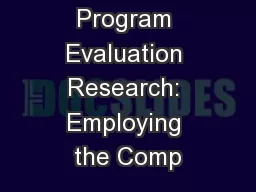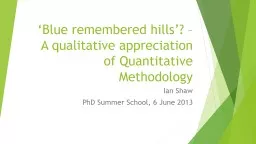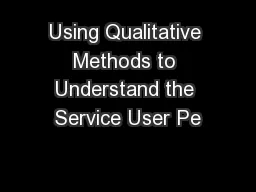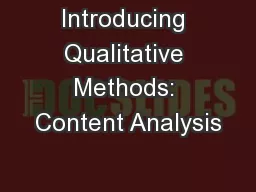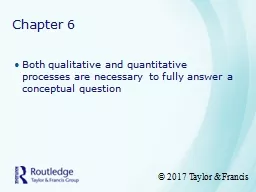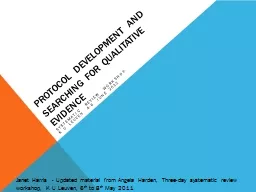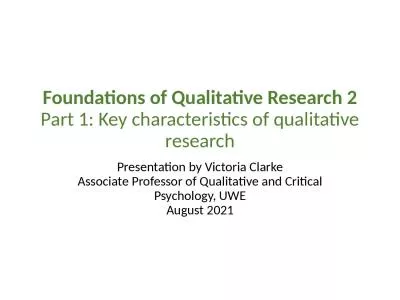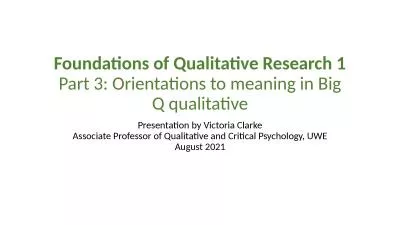PPT-Qualitative Program Evaluation Research: Employing the Comp
Author : faustina-dinatale | Published Date : 2017-07-06
LeAnn Grogan P utney PhD Educational Psychology amp Higher Education Professor and Departmen t Chair University of Nevada Las Vegas Joan Wink PhD Professor Emerita
Presentation Embed Code
Download Presentation
Download Presentation The PPT/PDF document "Qualitative Program Evaluation Research:..." is the property of its rightful owner. Permission is granted to download and print the materials on this website for personal, non-commercial use only, and to display it on your personal computer provided you do not modify the materials and that you retain all copyright notices contained in the materials. By downloading content from our website, you accept the terms of this agreement.
Qualitative Program Evaluation Research: Employing the Comp: Transcript
Download Rules Of Document
"Qualitative Program Evaluation Research: Employing the Comp"The content belongs to its owner. You may download and print it for personal use, without modification, and keep all copyright notices. By downloading, you agree to these terms.
Related Documents

